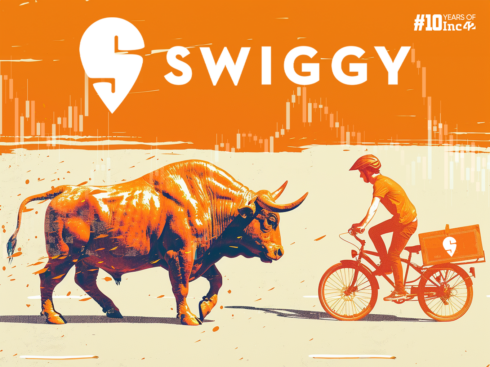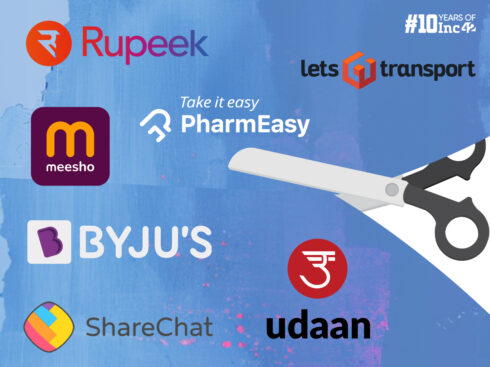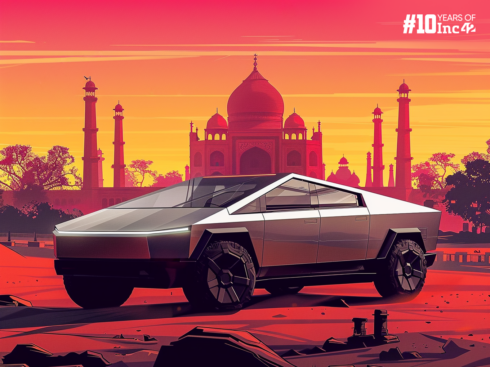SUMMARY
Has D2C really hit a growth wall in India after conquering the metros and Tier 1 cities?
There’s probably some kind of D2C brand at your arm’s reach right now, whether it is a packet of healthy snacks, jewellery, accessories or even what you might be wearing. New-age D2C startups and over 50K digital-first brands have pervaded not just India’s ecommerce aisles but also the daily lives of millions of Indians.
Although the past two years have clearly been about D2C in India and despite the opportunity, there’s a creeping feeling that maybe some of this enthusiasm is not just misplaced, but also overstated.
Has D2C really hit a growth wall in India after conquering the metros and Tier 1 cities? Will there be a wave of consolidation — perhaps, but not as one might imagine. But before we explain, here are the top stories from this past week:
- India’s Tokenisation Moment: Is the payments ecosystem finally ready for card tokenisation as new rules come into effect next month? We look to answer
- Lido Shutting Shop: Ronnie Screwvala-backed Lido Learning has become the latest edtech startup to bite the dust and will file for insolvency
D2C’s Speed Bump
Having raised $42 Bn in funding in 2021, everyone had high hopes for the startup ecosystem in 2022. However, the global economic slowdown and the chill in the public markets has caused a reversal of fortunes.
Ecommerce funding has also taken a hit as investors India have also taken a more cautious approach, only backing those startups that have a sustainable model in place and taking smaller bets.

According to Inc42 data, ecommerce funding in Q2 2022 declined by 36.84% to $1.2 Bn from $1.9 Bn in the previous Q1 2022. The number of deals in Q2 2022 also plummeted 18.55% to 79 from 97 in Q1 2022. Quarterly ecommerce funding has been on the decline since October 2021.
While some in the industry call the current situation a downturn, for others it is merely a correction. And that’s also largely the sentiment among D2C founders and other stakeholders. It’s not that startups are not getting funded but the capital is gravitating towards those that have a proven product-market fit.
Omnichannel Festive Season
But the funding crunch is still very real for early stage startups, and it does not help that inflation and rising fuel prices have brought about a chill in consumer spending as well.
For instance, a June 2022 report by HDFC Securities states that a decline in funding, low liquidity, high inflation and high customer acquisition costs remain the most critical challenges for D2C startups. It added that while D2C is ‘here to stay’, companies will have to expand to offline channels to achieve sustainable growth.
But this is a complicated balance because going omnichannel means growing operational costs.
“With online retail penetration only 4-5% in the country, D2C brands missed out on the exposure enjoyed by offline retail storefronts. They also missed the fulfilment leverage offered by an ecommerce marketplace for the commission charged per transaction,” an industry expert told Inc42 earlier this week.
Omnichannel will be a big focus before the festive season as brands look to shed their reliance on marketplaces and target higher order values in offline channels.
Even though marketplace sales during the festive season are expected to grow 28% year-on-year to $11.8 Bn as per RedSeer, this is not an analogue for D2C sales as these sales typically happen in silos and not on marketplaces.
Besides this, the cost of promotions on marketplaces can be very high during the festive season. So many brands prefer to bring customers to native stores rather than relying heavily on marketplaces during this time.
The cofounder of a confectionary brand told Inc42 this past week that some of the growth-stage brands need to think like early-stage startups once again. That means entering launchpads and accelerators that offer marketing credits and other free rewards. This is one way of keeping a light foot on the marketing pedal, while not going full throttle.
Logistics Challenge Robs D2C Sheen
Besides marketing spends, logistics is another high burn area for companies and much of it is due to the inherently high cost of logistics in the Indian market. High shipping costs can quickly erode margins for order sizes under INR 1,000 especially for pan-India delivery.
The low order value of ecommerce orders coupled with increasing costs of distribution is a primary reason for the lack of positive unit economics in D2C. Cutting logistics costs is simply not possible in many cases as customer experience suffers a hit and deliveries often get piled up at warehouses as brands look to ship in bulk to save costs
“Businesses witnessed a 10-15% rise in logistics costs in the past two years, primarily driven by fuel price hikes. It is genuinely a tough market to operate. So people need to create models keeping these costs in mind,” according to Shadowfax cofounder Abhishek Bansal.
Pro-ecommerce policies and projects such as the Open Network for Digital Commerce (ONDC) are seen as tailwinds, and are expected to help brands solve some of these many issues — in particular, logistics and marketplace dominance — but that may still not be enough for D2C brands to survive in the long term
The explosion of brands today will result in a graveyard of failed D2C ventures tomorrow. Because no successful D2C startup will spend money to buy a failed product and even the house of brands platforms might not want such brands under their umbrella.
Consolidation will happen for product IP and manufacturing reasons rather than the product itself, plus there’s a very real chance of large retail and FMCG giants scooping up brand names that register well with consumers, according to the head of a Gurugram-based consumer venture fund.
The latter part of 2022 will be the proving grounds for many D2C startups and as we have seen a boom is often followed by a down cycle. Of course, this is also the time where brands can rethink their approach and build resilient brands that can not just survive but thrive.
And that’s one of the running themes in Inc42’s D2C Summit 2022, which kicks off this week on September 16.
D2C Summit 3.0 Is Here
India’s biggest D2C and ecommerce conference is back with a third edition with over 5,000 attendees, 75+ speakers and D2C brands across three stages and 30 scintillating sessions. Join the likes of ONDC CEO T Koshy, founders of boAt, Melorra, Da Milano and others, along with investors such as Lightbox’s Sandeep Murthy in groundbreaking discussions and more!
Sign up and join us on September 16-17, 2022
Tech Stocks & Startup IPO Tracker
- Shaadi.com IPO? Anupam Mittal’s Shaadi.com is eyeing a second attempt at going public more than a decade after it first bid in 2009
- PolicyBazaar ESOPs: The listed insurance tech company granted ESOPs worth INR 1,044.13 Cr to chairman Yashish Dahiya, executive vice-chairman Alok Bansal and president Sarbvir Singh in FY22
Here’s how the past week has been for the listed tech companies we are tracking:

Startup Funding Tracker
- Weekly Funding Tally: After going flat in August, startup funding has picked up slightly though it’s still not close to the highs of 2021. This past week saw $225 Mn raised by Indian startups across 28 investment deals.
- New Unicorn: India saw its 107th unicorn and the fifth healthtech unicorn as Tata-backed 1mg raised close to $40 Mn in a funding round led by Tata Digital

Loan Apps Whitelist & Other Top Stories
- Online Gaming Ban: SC Issues Notice On TN Govt’s Plea Against Madras HC Order
- FM Asks RBI To Build “Whitelist” Of Legal Loan Apps
- Dunzo Hit By Workers’ Strike In Bengaluru
- Amazon Delists Seatbelt Alarm Blockers As Govt Pushes For Road Safety
- Govt To Issue Dos & Don’ts For Social Media Influencers; Paid Promotions Under Scrutiny
That’s all for this Sunday. We’ll catch you next week and hope to see you at The D2C Summit 3.0.



























